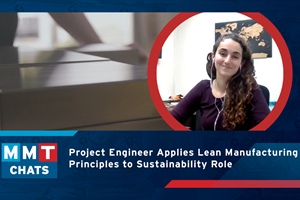
Quality management is the act of overseeing all activities and tasks that must be accomplished to maintain a desired level of excellence. This includes the determination of a quality policy, creating and implementing quality planning and assurance. Quality management ensures that an organization, product, and service is consistent. It has four main components: quality planning, quality assurance, quality control, and quality improvement. Quality management is focused not only on product and service quality but also on the means to achieve it.
Companies seeking continuous business process improvement, while embarking upon Enterprise Resource Planning (ERP) and implementation, are wise to adhere to a proven roadmap. As manufacturing activities enter into an improvement environment, how can organizations work more effectively and efficiently to handle new opportunities? This blog shares guidelines for quality and business process improvement planning to help your company achieve true business performance improvement and return on investment (ROI).
A Roadmap, much like the core principles of lean manufacturing, business process improvement is about eliminating waste and improving productivity. The following roadmap offers key guidelines for companies seeking continuous business improvement while embarking upon ERP improvement and implementation.
What Do OEMs Want?
OEMs want higher quality standards, tighter tolerances, lower costs, and faster speed to market. They are always looking for solutions that can increase throughput and decrease scrap rates by material and process advancements, reducing lead times and saving on cost. They especially want more technical expertise and guidance from their contract manufacturers (CMs). OEMs are increasingly asking their CMs to collaborate on developing new parts and products, including design, materials, prototyping, and testing. They expect them to have all the technical know-how they need to deliver the right solution quickly.
Typically, organizations define the processes they wish to improve when they develop their business case. However, during the implementation process, they should confirm that the processes defined in the business case are the ones that need to be improved and make sure they don’t miss any processes that should be improved. Note that an independent advisor (who understands and knows your business) can provide recommendations on improving business processes based on best practices from other customers. This analysis lays the foundation for how the ERP will be configured and ultimately used.
The most critical consideration is to link improved processes to business performance improvement with a single focus on current state metrics. For example, if today’s inventory has a specific carrying cost, what’s the impact on these metrics if a new process is put into place? In this way, management sees how investment in new ERP reduces inventory costs, reduce stock-outs, improves cycle time, etc.
It’s critical to define the business value of the future state in key performance areas such as:
- Improved customer satisfaction
- Improved productivity
- Faster access to information
- Improved cost of low quality
- The improved total cost of ownership
- Improved materials, technical support & costs
- Improved shipping
- Improved quality, safety, environmental/recycling
- Reduced cycle times
- Better on-time delivery
How Does Your Shop Improve?
First determine where you are now and document your business’ current state. Most business processes have evolved and passed from one person to another with minimal documentation, rather than from a conscious effort to reexamine and improve processes based on their strategic value constantly. We find that an ERP implementation is the perfect opportunity to dig deep into how the organization currently performs business processes. That “current state” documentation helps teams determine how to use best practices built into the ERP system to streamline and improve these processes. We believe the development and maintenance of the “as is” documentation is a priority and should be the responsibility of the “Process Owner” users with assistance from the Chief Business Process Officer (an independent outsider who understands and knows your business).
How does this phase work? Each business process is analyzed. A process flow is developed, and the inputs, processes, and outputs are developed. The process flow becomes an excellent tool to identify waste in the process. A shared view of the current state lets the entire team recognize any problems that exist. Many senior executives might not realize the extent of waste or problem areas. Still, once a “current state” map defines the processes with visual documentation, those issues see the light of day.
We find “as is” documentation goes much better if an ERP expert (again, a person who understands and knows your business) is in the room during the mapping phase. An independent eye often makes the process much more effective.
Today’s manufacturers have had a lot to pivot quickly to adapt to demands brought by the Corona Virus. Business Intelligence and metrics have played a vital role in providing the most successful manufacturers with insights necessary to find new ways to:
- Improve product (process) and service quality
- Drive greater value and responsiveness
- Increase the efficiency of plant floor resources
- Proliferate quality throughout the organization
Real-Time Monitoring Helps Improve Manufacturing Performance From the shop floor to the top floor; real-time data is one of the most powerful catalysts enabling greater manufacturing growth. By improving the quality of decisions, real-time data meet a diverse and demanding series of needs across every phase of manufacturing today. The results are greater revenue earned from higher levels of compliance, manufacturing quality, and best of all, delighted customers.
Related Content
MMT Chats: Project Engineer Applies Lean Manufacturing Principles to Growing Sustainability Role
MoldMaking Technology Editorial Director Christina Fuges catches up with MMT’s 30-Under-30 Honoree Katherine Pistorius, who has added Regional Sustainability Coordinator alongside her Project Engineer duties, which demonstrates the many paths one can take in a manufacturing career. Here she shares how this opportunity unfolded for her and what the job entails today and in the future. This episode is brought to you by ISCAR with New Ideas for Machining Intelligently.
Read MoreThe Critical Role of Management Representatives in ISO 9001
In ISO 9001 quality management systems, the Management Representative (MR) plays a crucial role. While the 2015 version of ISO 9001 no longer mandates this position, having a trusted management member serve as an MR remains vital for streamlining operations and maintaining quality standards.
Read MoreCertified Quality Management for Plastics Professionals – Materials to Tooling to Recycling
Why is certification of a shop’s quality management system to ISO 9001, AS9100, IATF 16949 or ISO 13485 so special? What does the certification signify? And what supports the paper behind the framed certificate?
Read MoreU.S. Economic Fundamentals Impacting Moldmaking
The economy continues to downshift, capping growth in moldmaking.
Read MoreRead Next
What Is Quality Planning?
A look at the connection between Quality Control (QC), Quality Assurance (QA) and Quality Management System (QMS).
Read MoreHow to Use Continuing Education to Remain Competitive in Moldmaking
Continued training helps moldmakers make tooling decisions and properly use the latest cutting tool to efficiently machine high-quality molds.
Read MoreHow to Use Strategic Planning Tools, Data to Manage the Human Side of Business
Q&A with Marion Wells, MMT EAB member and founder of Human Asset Management.
Read More





















